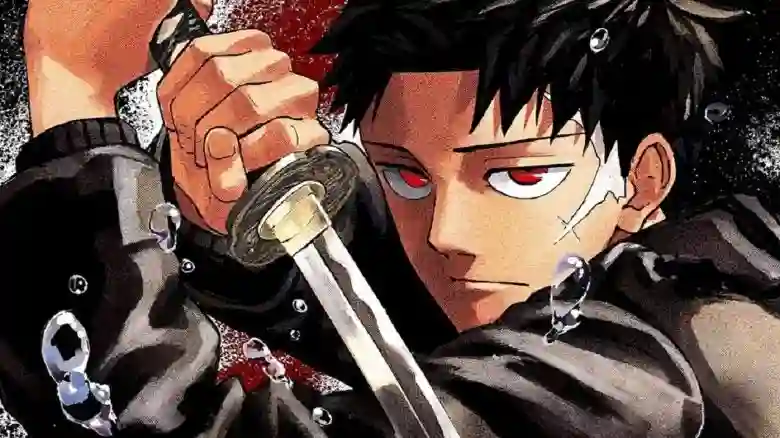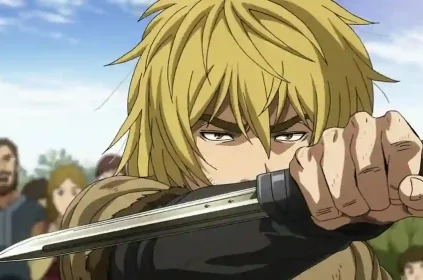The world of manga and anime has been enriched by the talents of countless creators, but few have left as profound an impact as Kentaro Miura. Renowned for his magnum opus, “Berserk,” Miura’s artistic evolution has been a remarkable journey that has spanned several decades. In this article, we will explore Kentaro Miura’s artistic development and the evolution of his unique style through the lens of “Berserk,” a dark fantasy masterpiece that has captivated audiences worldwide.
The Early Years: Glimpses of Brilliance
Kentaro Miura was born on July 11, 1966, in Chiba, Japan. From a young age, he displayed a keen interest in drawing and storytelling, foreshadowing his future career as a manga artist. His earliest work, “Miuranger,” created when he was in elementary school, already showcased his talent for creating dynamic and imaginative characters.
Miura’s formal foray into the manga world began with his debut one-shot manga, “Futatabi,” which he submitted to the Weekly Shōnen Magazine’s 7th Grand Prix in 1985. Although he did not win the competition, his work garnered attention for its detailed and intricate art style, which hinted at the artistic brilliance yet to come.
The Birth of “Berserk”: A Dark Fantasy Epic
In 1988, Kentaro Miura began serializing “Berserk” in Hakusensha’s Monthly Animal House magazine. This marked the beginning of a dark and complex narrative that would become his life’s work. “Berserk” was initially characterized by its gritty, medieval-inspired world and a protagonist named Guts, a lone swordsman seeking revenge.
During its early chapters, Miura’s art already displayed a level of detail and intricacy that set “Berserk” apart from other manga. His ability to render intricate armor, weapons, and medieval landscapes was unparalleled, immersing readers in a dark and foreboding world filled with supernatural horrors.
As the series progressed, Miura’s art underwent a noticeable evolution. The initial chapters of “Berserk” featured a more traditional shōnen manga art style, with character designs that emphasized youthful and heroic features. However, as the narrative grew darker and more complex, Miura’s art followed suit, embracing a more mature and gritty aesthetic.
The Golden Age Arc: Artistry Reimagined
One of the most significant milestones in Kentaro Miura’s artistic evolution came with the “Golden Age Arc” of “Berserk.” This arc, which spanned from Volume 3 to Volume 14, delved into the origins of key characters and introduced a more refined and detailed art style that would become emblematic of the series.
The “Golden Age Arc” allowed Miura to showcase his exceptional skills in character design and visual storytelling. Characters like Griffith, Guts, and Casca underwent significant development and were rendered with meticulous attention to detail. Miura’s ability to convey the emotional depth of his characters through their expressions and body language was particularly noteworthy.
The artistry of the “Golden Age Arc” extended to the depiction of battles and epic confrontations. Miura’s skill in illustrating intense and visceral combat scenes reached new heights, with a focus on anatomy, movement, and choreography. The battles within “Berserk” became a visual spectacle, immersing readers in the brutality and intensity of each clash.
A Dark and Meticulous World
One of the defining characteristics of Miura’s artistry in “Berserk” is his meticulous world-building. The series’ dark and foreboding setting, characterized by towering castles, sprawling medieval landscapes, and nightmarish creatures, is brought to life through Miura’s intricate and highly detailed artwork.
Miura’s ability to render architectural elements, from the towering spires of Midland Castle to the eerie and oppressive Tower of Conviction, added depth and richness to the series’ environments. These settings became more than mere backgrounds; they became integral to the narrative, shaping the atmosphere and tone of “Berserk.”
The supernatural elements within “Berserk,” including demonic Apostles and the God Hand, demanded a level of visual creativity and horror that Miura consistently delivered. The grotesque and nightmarish designs of these entities added to the series’ sense of dread and otherworldly menace.
As “Berserk” explored themes of ambition, betrayal, and the consequences of one’s choices, Miura’s art remained a vital component in conveying the emotional and psychological turmoil experienced by the characters. The expressions and body language of characters such as Guts and Griffith conveyed their inner struggles, adding depth and complexity to the narrative.
Evolution of Pacing and Composition
Kentaro Miura’s artistic evolution in “Berserk” also extended to his mastery of pacing and composition. The series’ narrative complexity demanded a sophisticated approach to storytelling, and Miura rose to the occasion.
The “Berserk” manga features a deliberate and methodical narrative structure, characterized by intricate flashbacks, foreshadowing, and character development. Miura’s use of panel layout and composition allowed for seamless transitions between past and present, contributing to the story’s depth and complexity.
The incorporation of multi-page spreads became a hallmark of Miura’s storytelling. These spreads allowed for epic and cinematic moments that left a lasting impact on readers. Whether it was the birth of Femto during the Eclipse or the iconic image of Guts wielding the Dragon Slayer sword, Miura’s use of visual storytelling was masterful.
Miura’s artistry also extended to his ability to evoke emotions through his compositions. The juxtaposition of light and shadow, the use of negative space, and the framing of characters in moments of despair or triumph all contributed to the emotional resonance of “Berserk.”
Conclusion
Kentaro Miura’s artistic evolution in “Berserk” is a testament to his dedication, skill, and unwavering commitment to his craft. From his early years as a budding artist to the creation of a dark fantasy epic that would captivate readers for decades, Miura’s journey is a remarkable one.
Through “Berserk,” Miura not only told a compelling story but also pushed the boundaries of manga artistry. His ability to render intricate details, create immersive worlds, and convey complex emotions through his characters’ expressions and movements set a standard for the medium.
As we reflect on the legacy of Kentaro Miura, we recognize the profound impact of his artistic evolution and the enduring beauty of his work in “Berserk.” His contributions to the world of manga and his artistic influence on storytelling will continue to inspire and captivate readers for generations to come.









